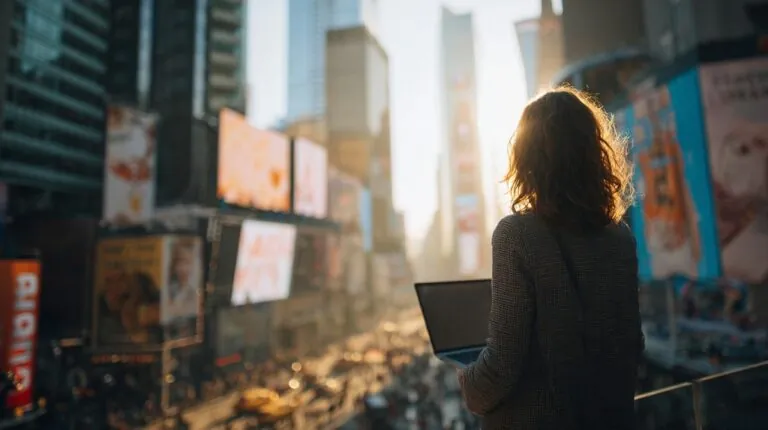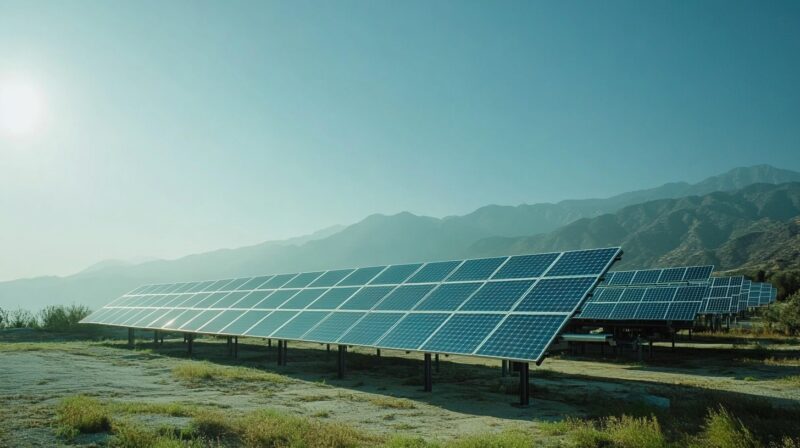Solar power is rapidly gaining importance in public spaces as cities seek sustainable solutions to growing energy demands.
Through harnessing the sun’s energy, public spaces can be transformed into eco-friendly and cost-efficient environments.
The environmental benefits are clear, as solar power reduces carbon emissions and reliance on fossil fuels.
Economically, it lowers energy costs and promotes long-term savings for municipalities, making it an ideal solution for modern urban planning.
Let us talk about all the innovative uses we can expect to see in public spaces around the world.
Solar-Powered Art and Aesthetic Installations
Solar-powered art installations have become a powerful medium to not only beautify public spaces but also raise awareness about renewable energy.
The following examples illustrate the impact of such installations on public consciousness and urban design:
Solar Flower
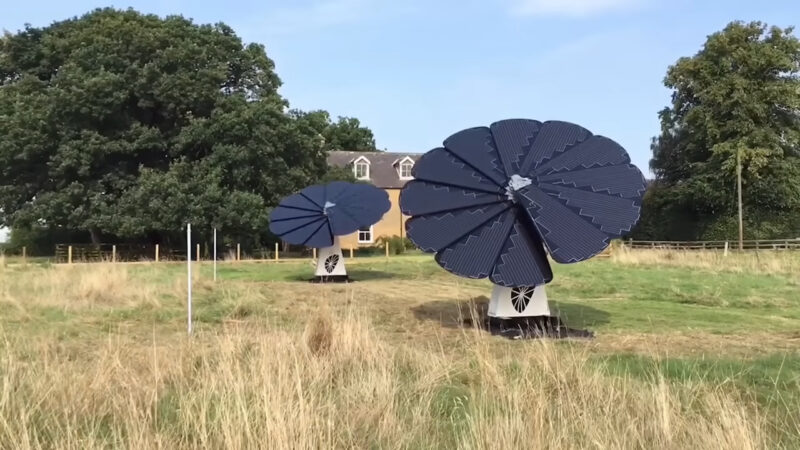
One of the most iconic and widely recognized solar-powered art installations is the Solar Flower.
The Solar Flower is designed to mimic the shape and function of a real flower, with large, petal-like structures that house solar panels.
Sonic Bloom (Seattle)
The Sonic Bloom installation in Seattle is one of the most captivating examples of how art and solar energy can combine to create both an aesthetic and functional public space.
Located at the Pacific Science Center near the iconic Space Needle, this public art installation features five towering flower sculptures, each standing between 20 and 33 feet tall.
The flowers are not only striking in their appearance but are also fully functional solar energy collectors.
How Solar-Powered Art Combines Aesthetics and Functionality
These installations do more than just generate energy; they engage the public and provoke thought.
- Raising Awareness: Solar art installations serve as visible reminders of the potential of renewable energy.
- Inspiring Environmental Action: The creative integration of solar energy into these installations can spark dialogue about sustainability, inspiring visitors to think about how they can incorporate renewable energy into their daily lives.
- Enhancing Urban Spaces: Solar-powered art installations not only raise awareness but also improve the aesthetic value of urban spaces.
- Fostering Connection with Nature: Many solar-powered art installations are inspired by natural forms, further fostering a connection between urban environments and nature.
- Adaptability to Remote Areas: In rural or isolated regions, extending electrical infrastructure can be costly and challenging.
Solar-Powered Charging Stations
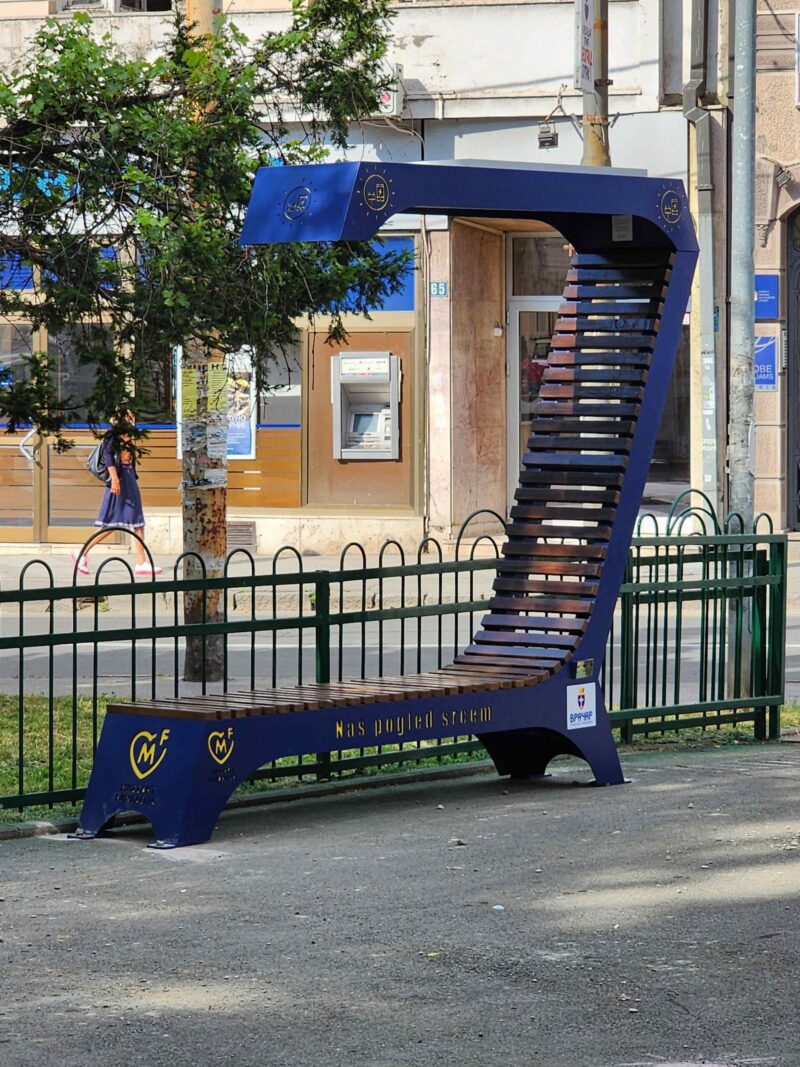
Public solar-powered charging stations are becoming a crucial element in modern urban infrastructure, especially in high-traffic areas such as:
- Parks
- Plazas
- City centers
These stations are often installed in the form of multifunctional benches, like those you can see at Avexcor, which allow users to charge their devices using clean, renewable energy.
Smart solar benches, which are gaining popularity globally, not only offer charging ports but also include features such as:
- Wi-Fi connectivity
- LED lighting for nighttime use
Some models are equipped with sensors to gather data on:
- Environmental conditions
- Foot traffic
- Air quality
The use of solar power for public charging stations enhances the user experience by providing environmentally friendly energy sources that align with the growing demand for sustainability in urban areas.
@hxsolarlight Solar street light!#ledlights #tiktokshopspringsale #ledlights #ourdoor #solarlights #outdoors ♬ original sound – HX-Solar Lights
Solar-Powered Public Lighting
Public lighting powered by solar energy is an efficient approach for urban infrastructure, as it introduces an eco-friendly, cost-effective solution to one of the most energy-intensive aspects of city life.
Traditional street lighting systems consume vast amounts of electricity and contribute significantly to urban carbon footprints, reducing it by 16%.
The introduction of solar-powered public lighting has transformed the landscape, offering numerous benefits that extend beyond cost savings.
Benefits of Solar-Powered LED Streetlights
Solar-powered LED streetlights provide a range of advantages for municipalities, including:
Reduction in Electricity Consumption
One of the most significant benefits of solar-powered lighting is its ability to drastically reduce electricity usage.
Traditional streetlights are powered by the electrical grid, which often relies on fossil fuels.
It helps establish substantial energy savings for cities, especially in high-density urban areas that need lighting year-round.
Lowering Carbon Footprints
Solar-powered lighting is an important step toward lowering the environmental impact of urban infrastructure.
Streetlights that rely on solar energy produce zero emissions during operation, as they are powered entirely by renewable energy.
Cities like Barcelona, Cape Town, and Los Angeles have integrated solar-powered streetlights into their urban plans.
Solar-Powered Waste Management
Solar-powered waste management systems are transforming how cities handle public trash collection.
Smart solar trash cans are equipped with compactors and sensors that operate on solar energy. That way, they enable these devices to manage waste more efficiently.
The solar-powered compactors reduce the volume of waste, allowing these bins to hold more trash before needing to be emptied.
It reduces the frequency of waste collection, which in turn lowers the cost of waste management and decreases the carbon footprint of garbage trucks.
The sensors in these trash cans can also communicate with municipal systems, sending alerts when they are full and need to be serviced.
Cities such as Philadelphia and Copenhagen have already implemented solar-powered waste management systems, seeing substantial improvements in waste collection efficiency and cost savings.
Integration into Urban Planning and Smart Cities
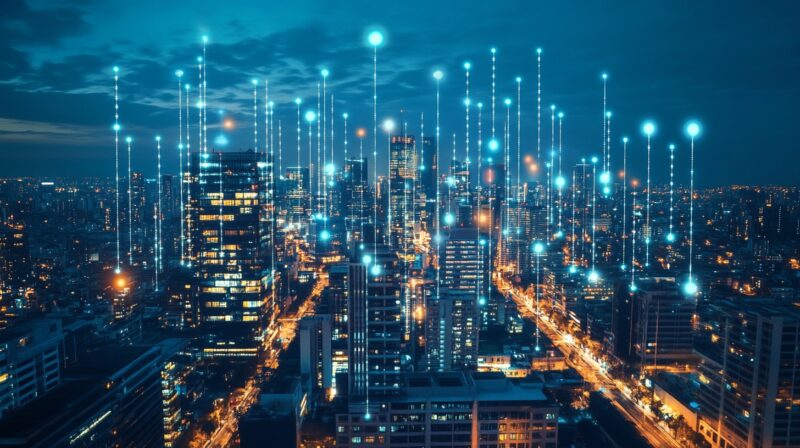
The integration of solar-powered furniture into urban planning plays a critical role in the development of smart cities, which prioritize sustainability, efficiency, and enhanced quality of life for residents.
Solar-powered benches and trash cans, for example, serve multiple purposes beyond their traditional functions.
Solar benches, equipped with USB charging ports, Wi-Fi, and lighting, provide public seating while harnessing solar energy to power essential services.
These benches not only offer convenience to citizens but also provide clean energy for charging devices.
They also reduce reliance on the traditional power grid, cutting energy costs for municipalities.
Similarly, solar-powered trash cans equipped with compactors and sensors reduce the need for frequent waste collection trips, optimizing waste management processes and reducing emissions from garbage trucks.
The Bottom Line
Integrating solar power into public spaces is essential for creating sustainable urban environments.
Adopting solar technologies in urban planning helps cities reduce their carbon footprint, lower costs, and move toward a more sustainable future.







